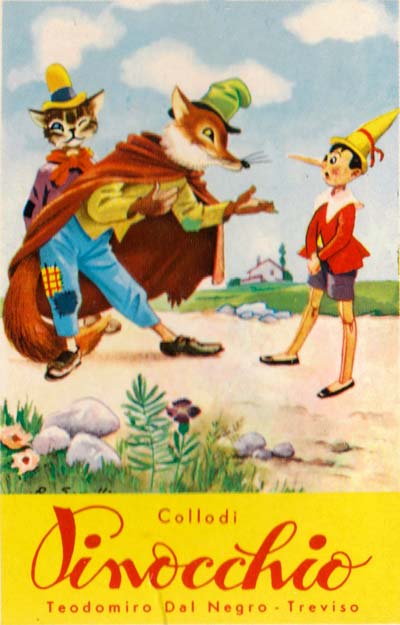Le Avventure di Pinocchio
Avventure di Pinocchio by Dal Negro, based on Carlo Collodi’s famous 1883 novel “The Adventures of Pinocchio”.
Le Avventure di Pinocchio produced by Teodomiro Dal Negro around 1980, based on Carlo Collodi’s famous 1883 novel for children “The Adventures of Pinocchio”. This story seems to have struck a chord with people all over the world. Pinocchio is two Italian words put together :- Pine (pine) and Occhio (eye). Pinocchio wasn’t a very lovable character in Collodi’s book but Disney turned him into something much more appealing in the 1940 film. The deck is subdivided into four sets of 9 cards (labelled A-I) plus 4 extra cards, making a total of 40 cards. See the Rules►
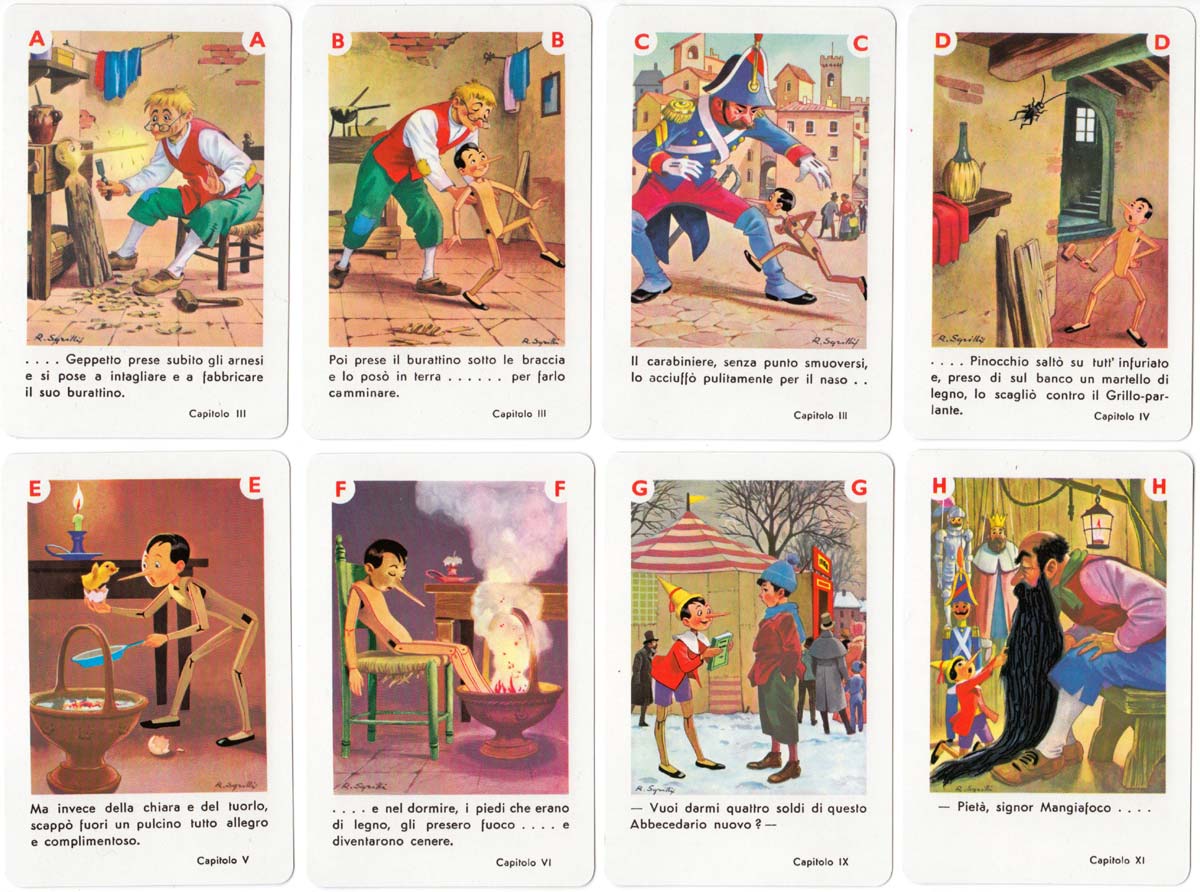
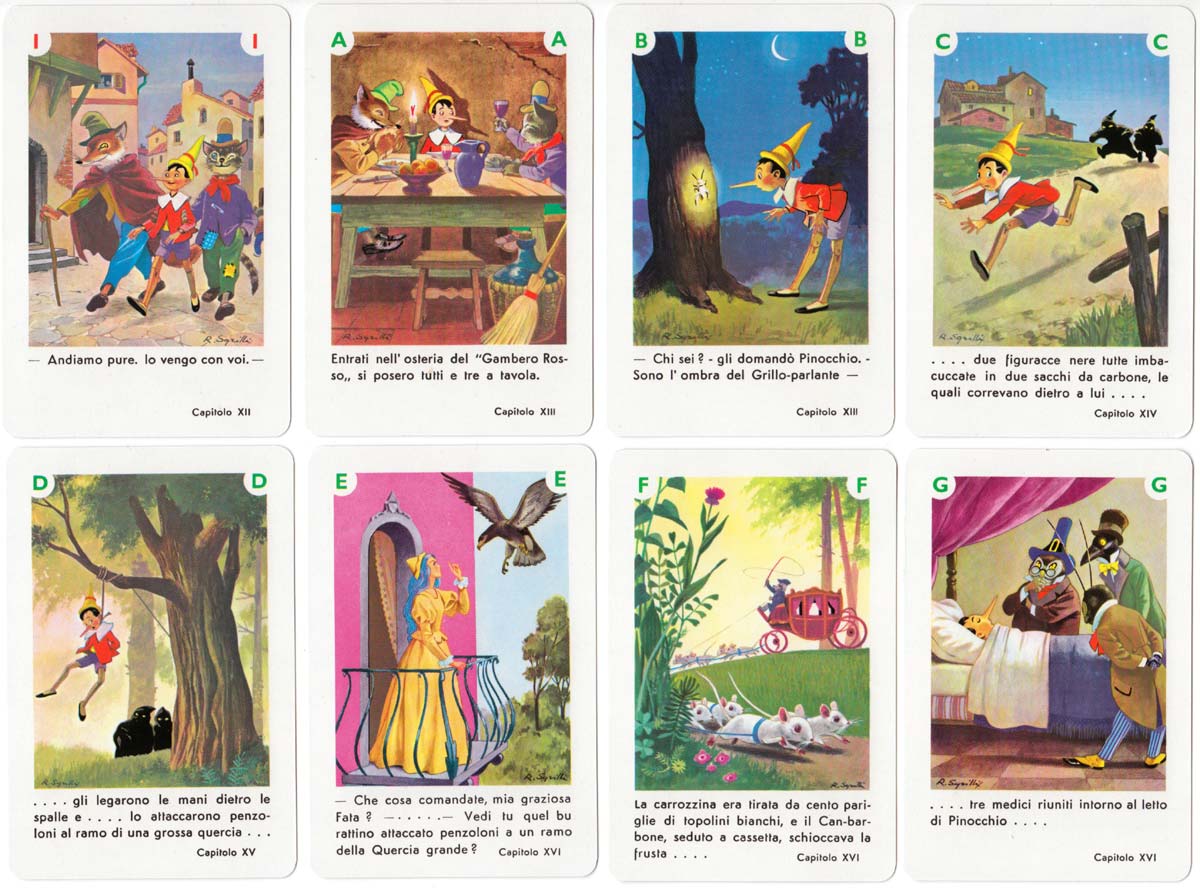
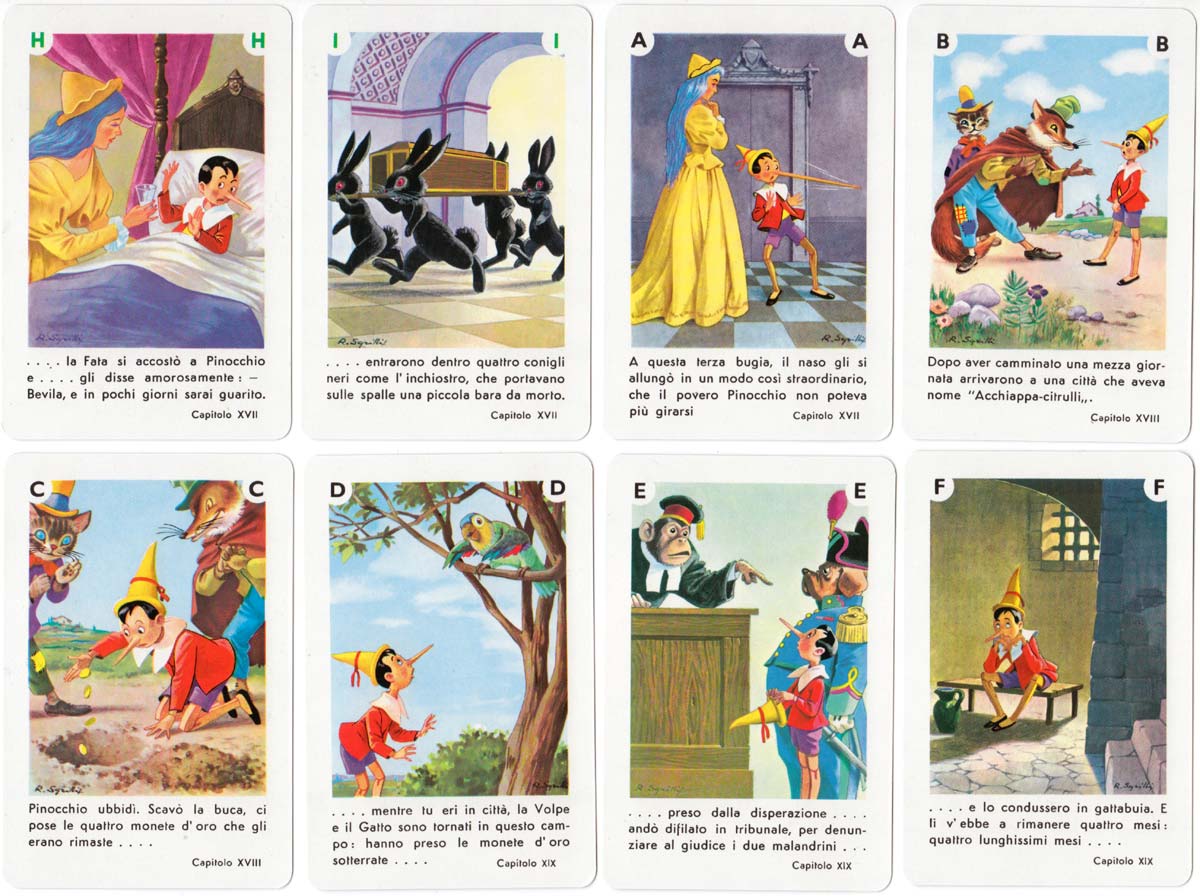
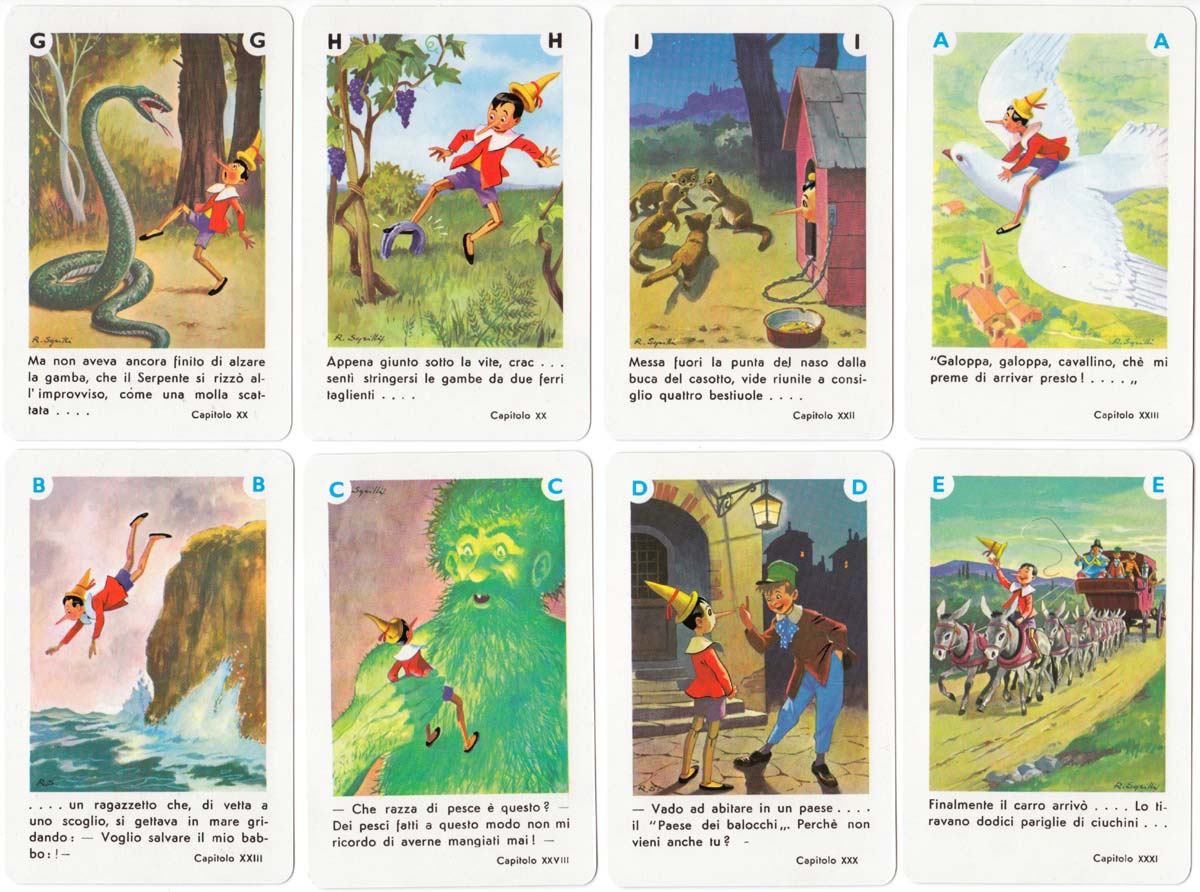
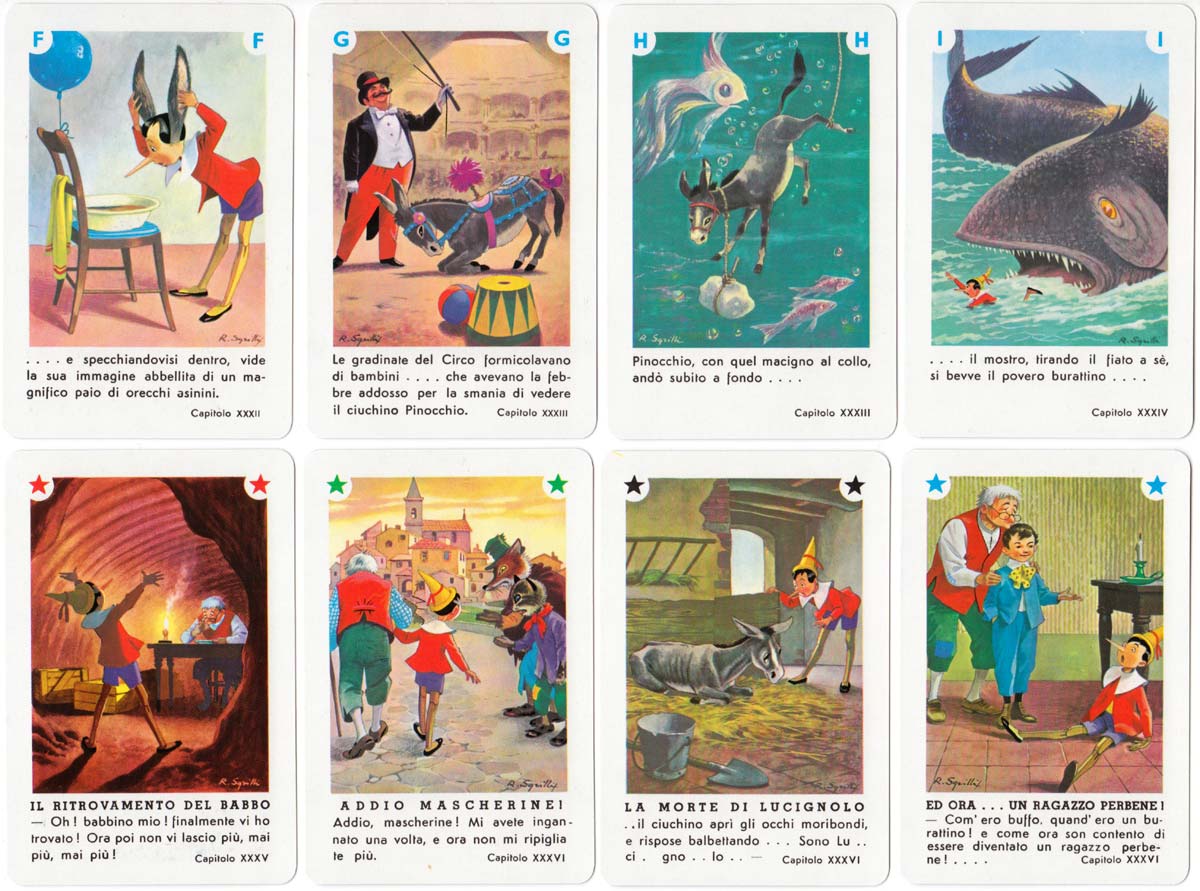
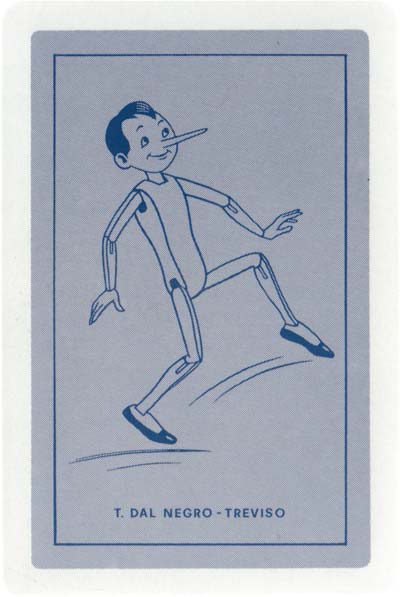
Above: Avventure di Pinocchio card game produced by Dal Negro, c.1980. 40 large sized cards + rules in box.

By Rex Pitts (1940-2021)
Member since January 30, 2009
Rex's main interest was in card games, because, he said, they were cheap and easy to get hold of in his early days of collecting. He is well known for his extensive knowledge of Pepys games and his book is on the bookshelves of many.
His other interest was non-standard playing cards. He also had collections of sheet music, music CDs, models of London buses, London Transport timetables and maps and other objects that intrigued him.
Rex had a chequered career at school. He was expelled twice, on one occasion for smoking! Despite this he trained as a radio engineer and worked for the BBC in the World Service.
Later he moved into sales and worked for a firm that made all kinds of packaging, a job he enjoyed until his retirement. He became an expert on boxes and would always investigate those that held his cards. He could always recognize a box made for Pepys, which were the same as those of Alf Cooke’s Universal Playing Card Company, who printed the card games. This interest changed into an ability to make and mend boxes, which he did with great dexterity. He loved this kind of handicraft work.
His dexterity of hand and eye soon led to his making card games of his own design. He spent hours and hours carefully cutting them out and colouring them by hand.
Related Articles

Late flowering of the Lyon pattern
Faustino Solesio’s late version of the Lyon pattern from about 1870.

Scientific Whist
“Scientific Whist” : standard cards with instructions for play on the faces by Chas Goodall & Son, 1...

Danao Tiāngōng Puke
Children’s playing cards based on the 1961 Chinese animated feature film 大闹天宫 (Havoc in Heaven).

Agatha Christie and Playing Cards revisited
Agatha Christie uses card-play as a primary focus of a story, and as a way of creating plots and mot...

Czech National Patterns by S.D. Modiano
Modiano produced cards with the Prague and Trappola patterns in the early 20th century.

Heartsette by Herbert Fitch & Co, 1893
A glimpse into a busy print and design office in late Victorian London.

Emilio Tadini playing cards
Beautiful dreamlike playing card designs by Emilio Tadini.

Rap Rummy
Rap Rummy made by Parker Brothers in 1926, only 4 years after the discovery of King Tutankhamen’s to...

Doppel-Deutsche Karten by Bratří Willnerové, Teplice
This deck from local manufacturer Bratří Willnerová offers a standard version of the popular Central...

The European Interchanges Quartets
A card game based around motorway intersections from European countries.

Austrian Tarock by S.D. Modiano
Modiano’s Austrian Tarock with country scenes has been in production for over 100 years.

Love Tests
Vintage novelty “Love Test” cards of a slightly saucy nature but all in good fun!

Briefmarken-Quartett
Quartet game featuring postage stamps from the Zones of Occupation in post-WWII Germany.

Le carte da gioco Arcimboldo
Courts and suit-signs inspired by the works of the Italian Renaissance painter, Giuseppe Arcimboldo....

22 Pittori in 22 Arcani
Collaborative Tarot with contributions from 22 different Italian artists including Menegazzi and Tav...

Kazakh Tales
Bold designs by K.K. Karpun and S. Nukenov inspired by Kazakh folk tales.
Most Popular
Our top articles from the past 28 days


